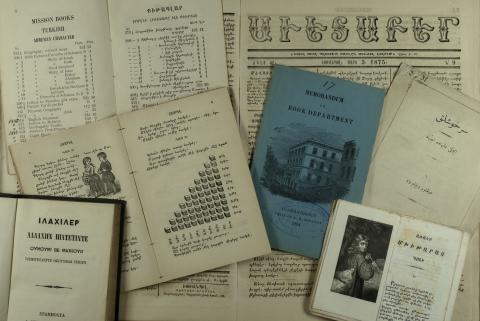
Aims and objectives
Azerbaijanian oral folk and traditional music is a vast and rich cultural heritage. One of its most representative and sophisticated branches is the art of mugam. This is a refined music expression which requires a high level of professional skills, imagination and memory from the performer, as well as knowledge and emotional devotion from the listener. Mugam is traditionally played at wedding feasts and intimate gatherings, and is also a part of Sufi dramatic ta'zie and shabih traditions. The musical tradition of mugam goes back centuries but, due to its oral form of transmission, there are only indirect sources allowing the reconstruction of its history and the curve of development/changes in the practices and form of this art as well as the relationship with similar music cultures of the region. Since the mid-nineteenth century, performances of mugam in the public domain have been documented through medium such as posters, photographs and newspaper articles and only since the early 1900s has the phonographic recording been available, which allows for an invaluable source of comparative research of performance patterns and styles.
In 2003 Azerbaijanian mugam was entered onto the list of UNESCO Proclamation of Masterpieces of the Oral and Intangible Heritage of Humankind. Among the urgent measures for preserving and promoting this cultural treasure, the action plan includes the necessity of collecting and safeguarding existing phonographic material and associated documentation.
There is no training of personnel who are responsible for work in audio collections. There is no united national audio-graphic collection and no reference data on holders of audio-phonographic units. There are virtually no interdisciplinary audio researchers in the country.
Firidun Shushinski (1925-1990) was a passionate collector and tireless researcher of Azerbaijanian folk music and mugam. He was considered a living memory of the mugam history, as he wrote books and articles, studied archives and collected personal evidences by mugam performers, led TV series and organized memorial concerts. After his death, the precious archive of the researcher with unique gramophone discs, vinyl records, photographs, press clippings, concert posters and documents was kept in a cellar in cardboard boxes remaining unsorted and unregistered. His archive on the history of mugam will be digitised, listed and relocated to the State Sound Archive of the Azerbaijan Republic. This pilot project is urgent and should serve as a catalyst for further projects.
Outcomes
The aims of the project have all been achieved and digital copies of the archived collection of F.Shushinsky have been delivered to the Azerbaijan State Sound Archive as well as to the British Library.
During the course of this pilot project, skills and knowledge have been updated with regard to standards and procedures of making archival quality copies of sound materials. A short trip to Tbilisi /Georgia, working in the state and private archives, revealed precious photographs of that period which had not previously been published or exhibited.
This project preserved F.Shushinsky's unique collection, which was in danger of degradation and thus becoming unavailable for researchers and promoters of traditional music of Azerbaijan. Archives of the outstanding tar players Bahram Mansurov, Gurban Primov, Ahmad Bakikhanov and others are in need of the same urgent attention. The Azerbaijan State Sound Archive successfully applied the methods and standards of archiving sound originals with use of the equipment and software acquired through this project.
Working on this project created the desire to connect this effort towards the sound heritage of Azerbaijan, with a broader set of measures aimed to preserve the cultural memory of Azerbaijan of the period - in photographic negatives, in epistolary heritage of the eminent personalities of arts and humanities in the old (Arabic) graphics, etc. This is the indirect result of work on the EAP pilot project.




